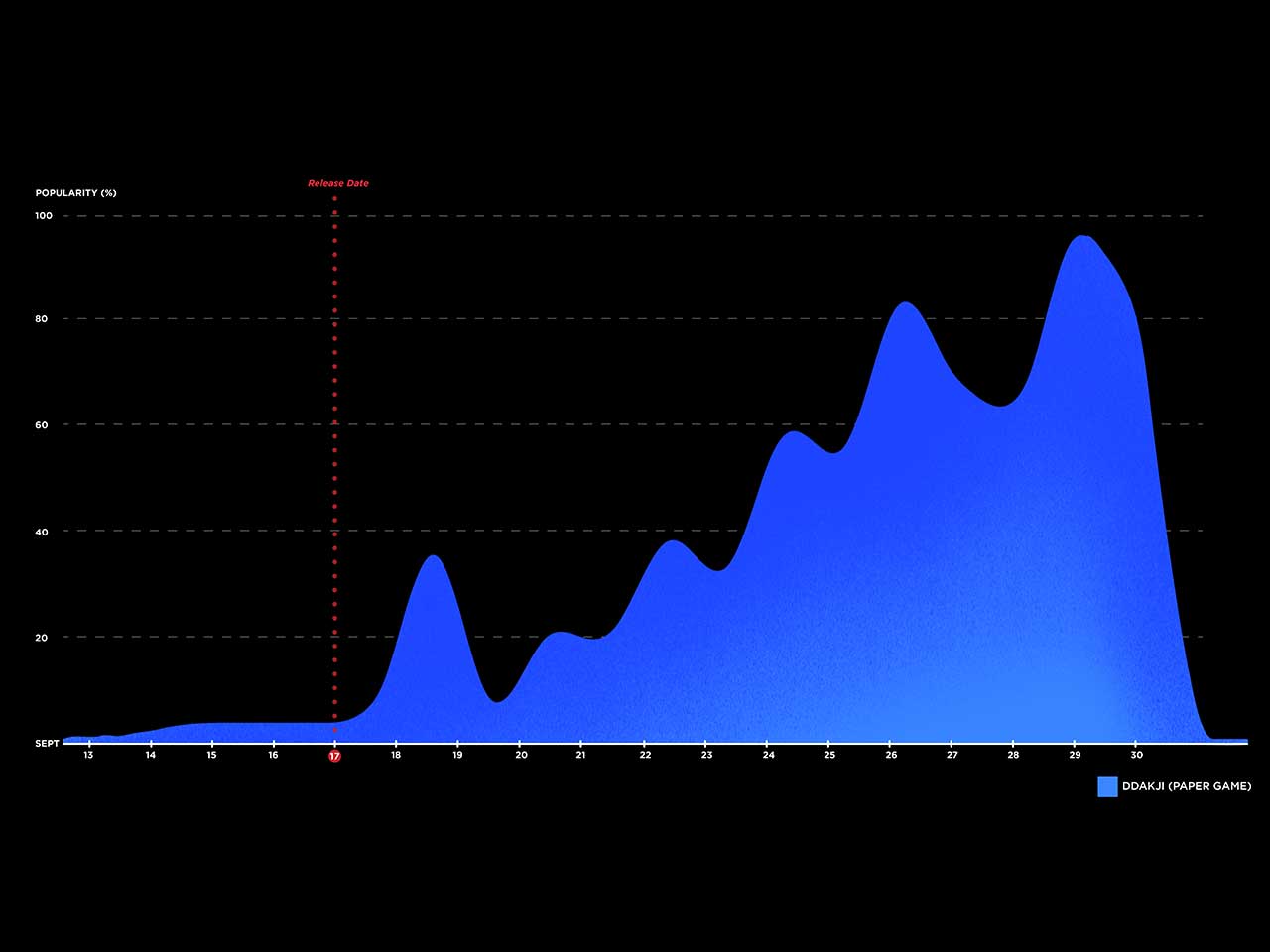Data
No surprise that massive popularity of the Netflix show sparked the interests of many, causing an increase in Google searches worldwide.

Introduction
Squid Game is a Korean drama series released on Netflix where it focuses on a large group of contestants competing against each other in childhood games for a massive prize money, all of which comes with a deadly price. It has taken over the world on all social media platforms with people of all ages taking part by playing these games and even recreating some scenes for content online.
Data Visualisation
The data that I have picked for this project is sourced from Google Trends, where it shows the popularity percentage levels of relevant keywords from the show through a line chart. Based on this set of data, I enhanced the line chart given to me by convering it to line area graph, as it provides me the opportunity to bring emphasis on the games’ popularity trends through the use of colours and textures. Furthermore, line area graphs’ portrayal of solid forms gives readers a better insight into how the popularity of these games correlates to the release of the series.

Findings
With ‘Squid Game’ becoming one of the most watched series of all time, it is no surprise that it has taken a permanent space on all platforms of social media within the month of its release. The phenomenon of ‘Squid Game’ shook the entertainment industry worldwide, creating a spot in mainstream culture.
Content creators on platforms like Twitter and TikTok, have utilised its popularity to gain more followers by creating video content in relation to the show such as playing these games in person to see if they would survive the game as a contestant, or producing how-to videos in regards to the Dalgona candy used in the series. In addition, many have even purchased pieces of clothing that were similar to the ones worn by the contestants, deepening the influence this series has on the world. Hence, it is no surprise that its massive popularity sparked the interests of many, causing an increase in Google searches worldwide.

Insights
It is noticeable that there are no visible changes in the area forms for all three games during the beginning of September, all at an average of 0. However, from September 17th onwards, which is the release date of the series, it sparked a high increase in popularity for all three games, forming large area graphs that depicts the high intensity of popularity within the beginning period after the show premiered.
It is interesting to note how the sudden high increase in popularity for the three games was sparked right after the release of the show, and it continues to rise for the rest of the month with no intentions of returning back down to 0 like before.



Conclusion
From my data visualisation, it is interesting to conclude how the entertainment industry plays such a vital role in providing asian representation and popularising known cultures in mainstream media. ‘Squid Game’ is a prime example of this. Through the portrayal of local Korean childhood activities in a popular Netflix show streamed across the world, it educates the public about the rich culture of Korea and provides viewers a chance to try these games for themselves, bringing these activities overseas and worldwide as well.
The release of the show ‘Squid Game’ has led to such a massive popularity, turning Korea’s local activities into trends that encourage people everywhere to try, breaking language barriers and providing a richer experience about the country.
References
- Mauris Lim, Shawn. “Squid Game Officially Becomes Netflix’s Most-Watched Show with 111m Views.” The Drum, 14 Oct. 2021, www.thedrum.com/news/2021/10/13/squid-game-officially-becomes-netflixs-most-watched-show-with-111m-views.
- Slater, Jack. “Squid Game: What Are the Games Played in the Tournament?” Metro, 17 Oct. 2021, metro.co.uk/2021/10/16/squid-game-what-are-the-games-played-in-the-tournament-15432759.
